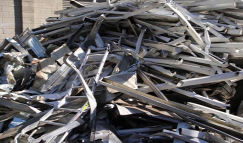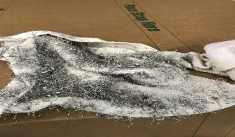Learn how to manage scrap metal for recycling and determine when it becomes hazardous waste.
Scrap metal generated on campus must be recycled or removed as hazardous waste. Proper disposal and handling of scrap metal requires proper housekeeping procedures, including the use of correct storage and waste bins. All personnel responsible for these procedures must be trained at their specific site.
Direct Metal Recycle Bins
All waste that has significant metal shavings on it (e.g., plastic, paper, latex gloves) must be separated from these bins, placed in sealed containers, and labeled as “Hazardous Waste” to be picked up by EH&S using WASTe.
Is Scrap Metal Recyclable or Hazardous Waste?
- All scrap metal from any source, if not recycled, is considered hazardous waste.
- Metal shavings 100 microns or larger can be managed as scrap metal for recycling.
- Metal sludge, semi-solids and dusts/grindings (< 100 microns) are to be treated as hazardous waste and must be placed in sealed containers and correctly labeled.

Metal Debris & Metal Shavings
Metal Debris is large pieces of scrap metal, which can be all types of metals
Metal Shavings are any scraps of metal that are larger than 100 microns
>> Determine whether recyclable or waste

Powder, Grindings & Metal Contaminated Debris
Powder and Grindings are any metal dust that is smaller than 100 microns
Metal Contaminated Debris is any material covered in metal scraps or shavings that cannot be separated (e.g., rags, towels, latex gloves, plastic, floor sweepings)
>> Determine whether recyclable or waste
Proper Housekeeping
Simple procedures such as cleaning, dusting, and organizing are essential for maintaining safe work practices and increasing productivity. Some tips for proper housekeeping include:
- Keeping one’s workspace and machinery clean.
- Reporting leaks, spills, or faulty equipment.
- Preventing dust inhalation by using proper equipment and controls when dealing with dust.
Scrap metal is defined in section 261.1 (c)(6) of Title 40 of the Code of Federal Regulations (40 CFR) as: bits and pieces of metal parts (e.g., bars, turnings, rods, sheets, wire) or metal pieces that may be combined together with bolts or soldering (e.g., radiators, scrap automobiles, railroad box cars), which when worn or superfluous can be recycled.